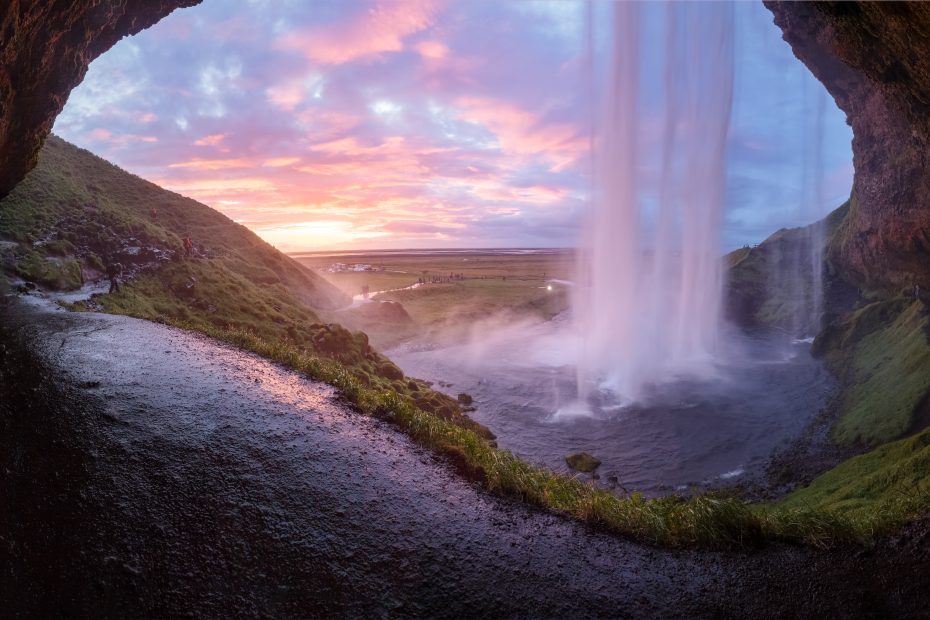Iceland is aptly nicknamed the “Land of Fire and Ice” thanks to its breathtaking natural landscapes shaped by glaciers and volcanoes. This remote island in the North Atlantic is home to some of the most awe-inspiring scenery on earth. From mighty waterfalls to erupting geysers, Iceland puts on an unforgettable show for visitors. Let’s explore some of the country’s most magnificent natural wonders.
Glaciers
Iceland has over 300 glaciers covering 11% of its land area. These rivers of ice grind their way through the landscape, carving out valleys and sculpting mountains over millennia.
Vatnajökull
The crown jewel is Vatnajökull, Europe’s largest glacier. Spanning over 8000 sq km, this gigantic ice cap contains so much water that if it all melted at once it could cover the entire land area of Iceland with a meter of water! Sections of Vatnajökull can be visited on guided glacier walks.
Sólheimajökull
Sólheimajökull is an outlet glacier of the mighty Mýrdalsjökull ice cap. This narrow glacier tongue extends down a valley, providing easy access for glacier hiking. On a clear day, you can enjoy panoramic views from the top.
Svínafellsjökull
Nested under Iceland’s highest peak, Hvannadalshnjúkur, Svínafellsjökull is awash with deep crevasses and glittering ice pinnacles. Led by experienced guides, travelers can trek out onto this slow-moving glacier for a taste of Iceland’s raw natural power.
Waterfalls
Fed by glacial meltwater, Iceland has tons of tumbling, roaring waterfalls guaranteed to take your breath away. Three of the best are:
Dettifoss
With the greatest volume of any waterfall in Europe, thundering Dettifoss is nicknamed “The Beast.” 100 cubic meters of water plunges over the cliff edge every second, creating a deafening roar and dramatic misty spray.
Seljalandsfoss
The postcard-perfect Seljalandsfoss waterfall has a narrow stream that plunges 60m over a concave cliff. A path runs behind the cascade, allowing you to walk back into the cave behind the waterfall curtain for a one-of-a-kind perspective looking out through the water.
Skógafoss
One of Iceland’s biggest attractions, Skógafoss hurls 60m off a dramatic rocky cliff, drenching onlookers with its drifting mist. Climb the staircase alongside for aerial views looking down on the powerful cascade.
Geothermal Areas
Iceland sits on the Mid-Atlantic Ridge where two tectonic plates meet, making it a hotbed of volcanic and geothermal activity. Fumaroles, mud pots, and geysers bubble up from the earth’s crust.
Geysir
No tour of Iceland’s geological wonders is complete without seeing the “great geyser” that gave all others their name. Geysir has mostly gone dormant but fortunately the nearby Strokkur geyser erupts every 5-10 minutes, blasting water 60m into the air for an unforgettable show.
Strokkur
Strokkur is one of Iceland’s most active geysers, erupting every few minutes and shooting jets of boiling water high in the air. Crowds gather around it, cameras poised, waiting for the next big blast. Stand downwind to avoid getting soaked!
Hverarönd
The geothermal area of Hverarönd in northern Iceland features bubbling mud pits, hissing fumaroles, and steaming sulfur vents tinting the landscape vibrant colors of red, yellow, and green. The powerful stench serves as a reminder that you’re walking through a volcanic landscape!
Volcanoes
Situated above a hot spot in the earth’s crust, Iceland has 130 volcanic mountains, many still active. Two notorious fire mountains are:
Hengill
Hengill is a sprawling volcanic mountain range covering over 100 km2. Its geothermal activity provides energy for Iceland’s industries and heats the water in swimming pools around Reykjavik. Visitors can see volcanic vents spewing steam, bubbling mud pots, and fizzing hot springs.
Katla
Notorious Katla is one of Iceland’s most active and dangerous volcanoes, hidden under the Mýrdalsjökull glacier. This subglacial volcano erupts every 40-80 years, melting ice to unleash catastrophic flooding down the southern coast. Due for another big eruption, Katla is closely monitored by volcanologists.
Summary
With wildly varied landscapes carved out by ancient glaciers and modern volcanoes, Iceland offers a feast for the senses and some of the world’s most astonishing scenery. This remote island has glaciers to scale, roaring waterfalls to admire, erupting geysers to marvel at, and volcanoes that tremble with seismic power. Iceland deserves its nickname as the magical “Land of Fire and Ice.”
Frequently Asked Questions
Q: What is Iceland’s nickname and why?
A: Iceland is nicknamed the “Land of Fire and Ice” because of its contrasting glacial and volcanic landscapes – the ice of its glaciers and the fire of its active volcanoes.
Q: What percentage of Iceland is covered by glaciers?
A: About 11% of Iceland’s total land area is covered by glaciers. Iceland has over 300 named glaciers.
Q: Which waterfall has the highest volume in Europe?
A: Dettifoss waterfall has the greatest volume of any waterfall in Europe at 100 cubic meters per second. It is located in northern Iceland.
Q: Where can you walk behind a waterfall in Iceland?
A: The Seljalandsfoss waterfall has a path that goes behind the cascade so visitors can walk back into the cave behind the falling curtain of water.
Q: Which volcano is hidden beneath a glacier and prone to catastrophic flooding?
A: The subglacial volcano Katla lies beneath the Mýrdalsjökull glacier. Katla has historically caused massive melting and flooding when it erupts under the ice cap.
